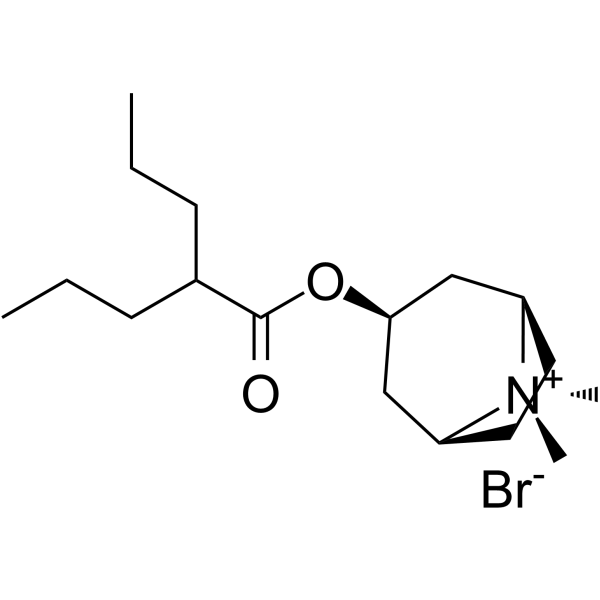80-50-2
| Name | anisotropine methylbromide |
|---|---|
| Synonyms |
octatropine methylbromide
Methoxy(benzene-2,4,6-d3) Anisole-2,4,6-d3 1,3,5-trideuterio-2-methoxy-benzene CHOLINE IODIDE 1-HYDROXY-α-PHENYLCYCLOPENTANEACETATE 2,4,6-Trideutero-anisol anisotropine methobromide 2,4,6-Trideuterio-anisol anisotropine methyl bromide 2,4,6-trideuterioanisole |
| Description | Anisotropine methobromide is an orally active anticholinergic muscarinic antagonist. Anisotropine methobromide can inhibit gastric acid secretion and is used as an adjunct to peptic ulcers[1]. |
|---|---|
| Related Catalog | |
| In Vivo | Anisotropine methobromide (intravenous injection, 0.5 μM and 0.1 mL, once) can block acetylcholine-induced vocalization, intestinal spasm and intestinal contractions in conscious or anesthetized dogs[1]. Animal Model: Dogs weighing 2.5 to 5.0 kg[1] Dosage: 0.5 μM, 0.1 mL Administration: Intravenous injection; once Result: Inhibited the acetylcholine-induced vocalization with maximum inhibition of 85.1% and the acetylcholine-induced intestinal spasm with maximum inhibition of 79%. |
| References |
| Melting Point | 329ºC |
|---|---|
| Molecular Formula | C27H43NO9 |
| Molecular Weight | 525.63200 |
| Exact Mass | 525.29400 |
| PSA | 174.31000 |
| Storage condition | 2-8°C |
CHEMICAL IDENTIFICATION
HEALTH HAZARD DATAACUTE TOXICITY DATA
|
| Symbol |


GHS07, GHS09 |
|---|---|
| Signal Word | Warning |
| Hazard Statements | H302-H312-H332-H400 |
| Precautionary Statements | P273-P280 |
| Personal Protective Equipment | dust mask type N95 (US);Eyeshields;Gloves |
| Hazard Codes | Xn: Harmful;N: Dangerous for the environment; |
| Risk Phrases | R20/21/22 |
| Safety Phrases | 36-61-60 |
| RIDADR | UN 3077 9/PG 3 |
| WGK Germany | 3 |
| RTECS | YM3710000 |
